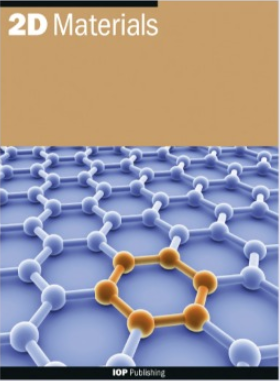氧化钴/还原氧化石墨烯复合材料中的氧空位通过介导激子提高光催化二氧化碳还原的长期有效性
IF 4.3
3区 材料科学
Q2 MATERIALS SCIENCE, MULTIDISCIPLINARY
引用次数: 0
摘要
光催化还原二氧化碳(CO2)有望成为减少碳排放的有效途径。设计长期有效的光催化材料是光催化技术的关键。在这项工作中,采用一步法原位制备了负载在硅基底还原氧化石墨烯(rGO)膜表面的 CoO 纳米粒子。所制备的材料可在 70 小时内以 ∼185 ± 30 µmol g-1 h-1 的稳定速率将二氧化碳转化为一氧化碳(CO),选择性接近 100%。该材料体系含有丰富的氧空位,并在光催化过程中产生新的氧空位。氧空位介导了与激子的相互作用:(i) 促进自由激子的解离;(ii) 在与声子的耦合效应下形成束缚激子,抑制光生电子和空穴的重组,并提高光催化还原二氧化碳的长期有效性。我们希望这项工作能为光催化材料的设计和优化提供有价值的见解。本文章由计算机程序翻译,如有差异,请以英文原文为准。
Oxygen vacancy in CoO/reduced graphene oxide composite for enhancing long-term effectiveness of photocatalytic CO2 reduction via mediating exciton
Photocatalytic reduction of carbon dioxide (CO2) has been expected to be an effective way to reduce carbon emissions. Designing photocatalytic materials with long-term effectiveness is the key of photocatalytic technology. In this work, CoO nanoparticles loaded on the surface of reduced graphene oxide (rGO) membranes on silicon substrate were in-situ fabricated by one-step method. The resulting materials can convert CO2 into carbon monoxide (CO) up to 70 h at a steady rate of ∼185 ± 30 µ mol g−1 h−1 with a selectivity of nearly 100%. This material system contained rich oxygen vacancies and generated new oxygen vacancies during the photocatalytic process. Oxygen vacancies mediate the interactions with excitons: (i) promoting the dissociation of free excitons; (ii) leading to form bound excitons under the coupling effect with phonons, inhibiting the recombination of photogenerated electrons and holes as well as enhancing the long-term effectiveness of photocatalytic CO2 reduction. We hope this work can provide valuable insights for the design and optimization of photocatalytic materials.
求助全文
通过发布文献求助,成功后即可免费获取论文全文。
去求助
来源期刊

2D Materials
MATERIALS SCIENCE, MULTIDISCIPLINARY-
CiteScore
10.70
自引率
5.50%
发文量
138
审稿时长
1.5 months
期刊介绍:
2D Materials is a multidisciplinary, electronic-only journal devoted to publishing fundamental and applied research of the highest quality and impact covering all aspects of graphene and related two-dimensional materials.
 求助内容:
求助内容: 应助结果提醒方式:
应助结果提醒方式:


